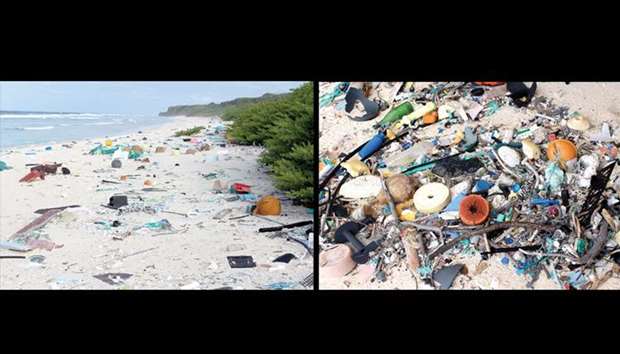Scientists have long warned about rampant pollution of the world’s
oceans. But the head of Unesco’s marine programme says a positive
change in consumer behaviour can still tip the balance. By Eva Krafczyk
When Jo Ruxton sees 1960s advertisements for plastic products she can only shake her head. “This was hailed as particularly modern and progressive,” says the former BBC documentarist and veteran employee of the World Wildlife Fund (WWF).
Decades later, the longevity of plastic is a problem across the world’s oceans. Shocked by reports of an “island of plastic” floating in the Pacific, Ruxton, a passionate diver, worked with scientists on the celebrated Blue Planet documentary team eight years ago to examine the problem of this debris.
“When we were in the Pacific we didn’t see anything. The water there looked beautiful,” the Briton recalls. But as soon as water samples were taken, the illusion ended.
“There was plastic everywhere, and the further we went, the more we found. And it was mixed with plankton – right at the beginning of the food chain.”
The consequences of this become apparent in new research reports about plastic debris found in the stomachs of seabirds or seals.
But the problem is by no means confined to the Pacific, stresses Ruxton, who also set up the Plastic Oceans Foundation that documents the contamination of the seas. “We travelled to 22 regions and even found plastic in the Arctic and Antarctic,” she said.
At a recent panel discussion in Frankfurt, Lutz-Christian Funke, managing director of the KfW Foundation, warned that in 2050 there could be “more plastic items than fish” swimming in the world’s oceans.
This prognosis is a cause of huge concern for Fanny Douvere, the head of Unesco’s World Heritage Centre’s marine programme. Scientists have long been alarmed by the pollution of the oceans. Douvere emphasises the race against time, where a change in consumer behaviour can still make a difference.
In addition to climate change, illegal fishing and general marine pollution, plastic waste is a very special challenge for World Heritage Sites on the seas, including the Galapagos Islands and the Australian Great Barrier Reef.
For example, in Papahanaumokuakea, an atoll belonging to Hawaii, more than a thousand tons of plastic waste have been cleared from the beaches since 1996, says Douvere.
“Imagine the temple of Angkor Wat or Machu Picchu being covered by garbage. The international community would be outraged,” she says, referring to some of the most visited sites in the area.
In the case of smaller Pacific islands, far from the attention of the world, only island inhabitants or environmentalists are outraged. And among the more than a thousand globally recognised protection sites, only 49 are in the oceans.
“You can say that the oceans are under-represented,” says Douvere. Moreover, most of the marine areas are located in international waters and are not subject to any national legislation – which is a prerequisite for the World Heritage Convention to take effect at all.
Ruxton also finds that the importance of the oceans is still too poorly anchored in people’s consciousness: “Most people think that we get our oxygen only from the forests and that protection of the rainforests is important. But about half of our oxygen comes from the seas.”
And even for those who live deep inland, she notes, all plastic materials that flow into streams and rivers end in the sea.
Whether through waste separation or deposits paid on plastic containers, asking manufacturers of plastic products to take more financial involvement would have a faster impact on other packaging.
“You can drink from glass bottles or take a shopping bag to the supermarket,” she says. “Everyone can do something.” – DPA

Plastic debris on East Beach, Henderson Island. Scientists have long warned about rampant pollution of the world’s oceans.


